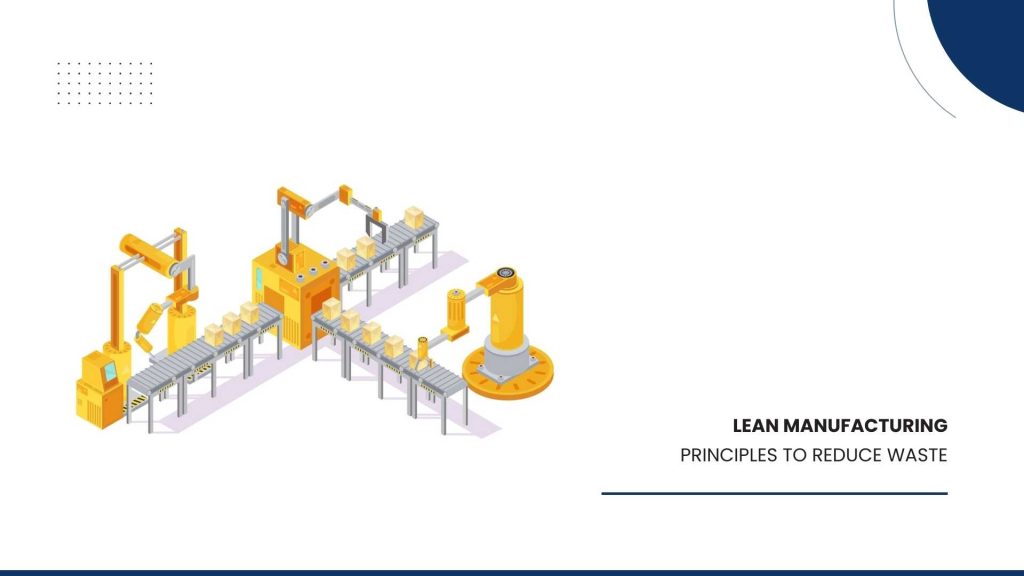Utilizing lean manufacturing principles can minimize waste and pinpoint areas for streamlining operations.
Integrating lean principles into an organization is about more than just starting an improvement initiative. It’s a journey that empowers the entire organization to make ongoing enhancements. While individual projects or programs may be part of a lean implementation, the main idea is to consistently remove any costs or actions that do not add value for the customer. A crucial aspect to focus on is reducing waste according to lean principles, as it presents a significant opportunity for improvement.
What Are the 5 Lean Management Principles
Lean manufacturing principles involve eliminating waste through five core principles:
- Define Value: Articulate each process’s value to the overall production, ensuring a focus on meaningful contributions.
- Map the Value Stream: Visualize and analyze the value stream from raw materials to the end product to streamline processes and identify areas for improvement.
- Create Flow: Optimize workflow by minimizing interruptions and bottlenecks, ensuring a smooth and continuous production process.
- Establish a Pull System: Implement a pull-based system where production is based on actual demand, reducing excess inventory and avoiding overproduction.
- Pursue Perfection: Encourage continuous team improvement to enhance processes and eliminate waste, embodying Lean Management principles.
Apply Lean Principles to Capture Saving from Each Type of Waste
Apply lean principles tailored to each type of waste to reduce waste in the value stream. Implementing lean manufacturing involves significant process improvements and reviewing a list of waste types.
Transport
Reduce the unnecessary movement of materials, tools, and people during transport and relocation. Analyzing transport methods and volumes and using flow diagrams to optimize travel distances, resource placement, and handling can reduce excess motion in workplaces. It can also shorten personnel’s walking distances.
Inventory
To minimize surplus inventories, align raw materials and production with customer demands using Just-In-Time Inventory Management. This approach reduces costs by freeing up space, lowering risks, and cutting unnecessary expenses.
Motion
Optimize workstations and machines to reduce unnecessary movements by employees, applying lean manufacturing principles to minimize travel distances for products and materials.
Waiting
Minimize materials, people, and equipment wait times by balancing process flows to match outputs with subsequent operations and customer order fulfillment rates.
Over-processing
To reduce costs and waste, eliminate process steps that do not add value for the customer, such as excessive-quality checks.
Overproduction
Eliminate excess work-in-process and finished goods inventory.
Excess inventories in food processing can lead to spoilage or damage, making it crucial to analyze and reduce waste for continuous improvement.
Defects
Strive for “perfect” product quality by removing defects in the process flow. Defective products are costly waste, and lean objectives focus on eliminating waste. Incorrect quality control limits can lead to rejecting good products or accepting defective ones. Analyzing process flows, control limits, and procedures ensures correct settings and adds value to each step.
Why is ERP critical in lean manufacturing?
Acumatica’s cloud-based ERP aids manufacturers in implementing lean manufacturing by tracking material flows, enabling real-time data analysis, and fostering team collaboration.
In lean manufacturing, ERP systems are crucial in optimizing inventory levels, minimizing waste, and aiding manufacturers in efficiently managing product flow. Moreover, they enhance manufacturing planning, which is essential for promptly meeting customer demands. Additionally, ERP systems offer valuable insights for ongoing enhancements.
Read Related Topic: Lean Manufacturing In Production.

Sangeetha brings 20 years of experience in Information Technology which includes Solution architecting, building micro services, research, and evaluation of business applications, integrating apps.

